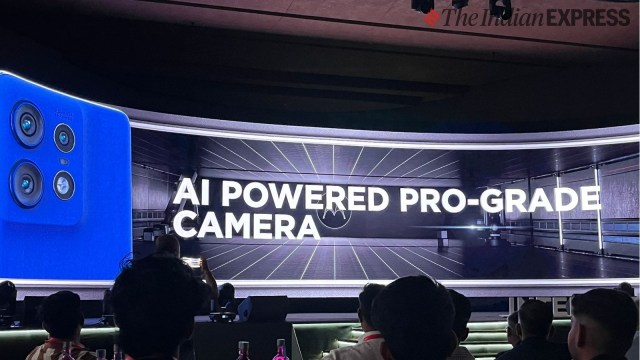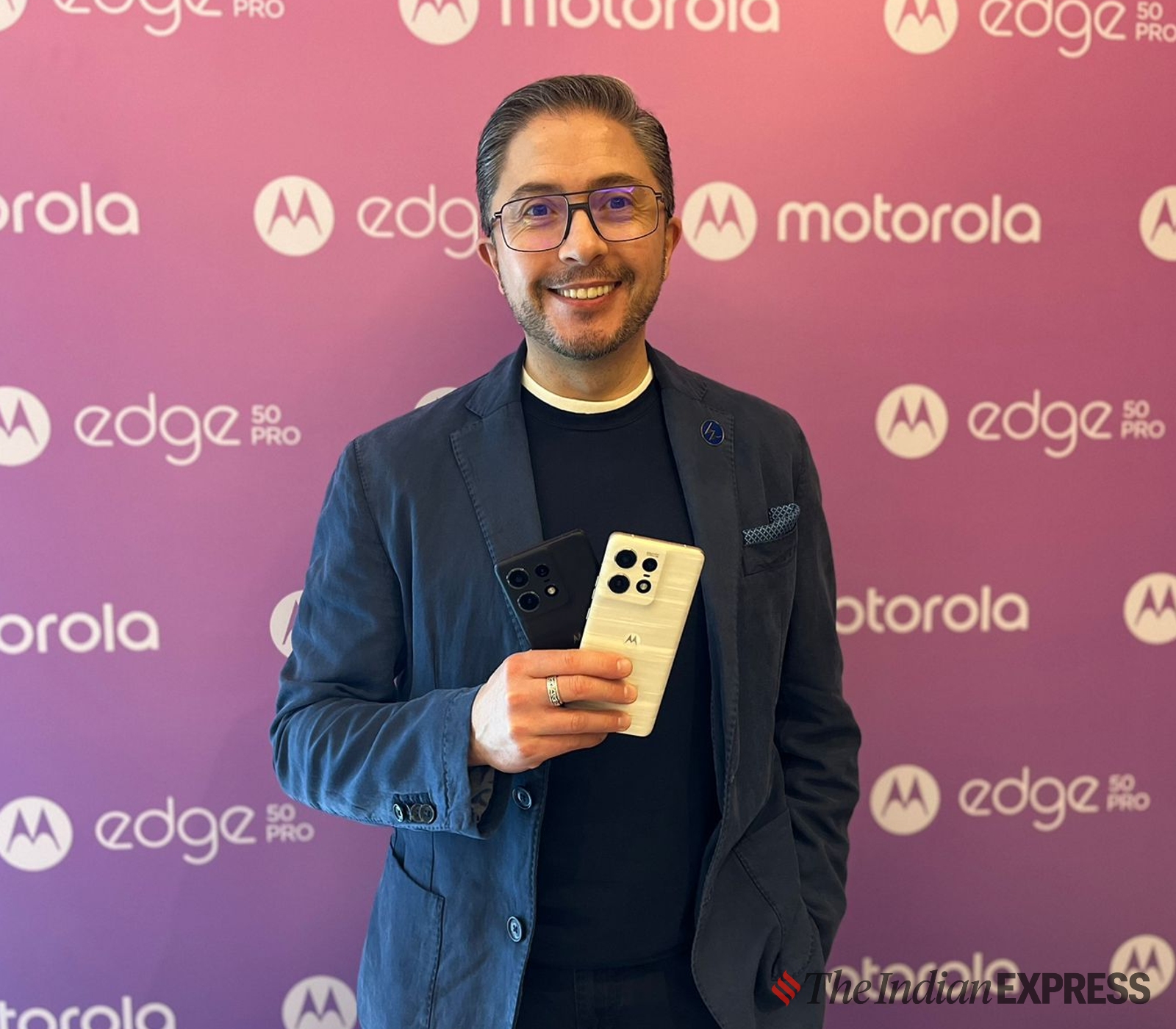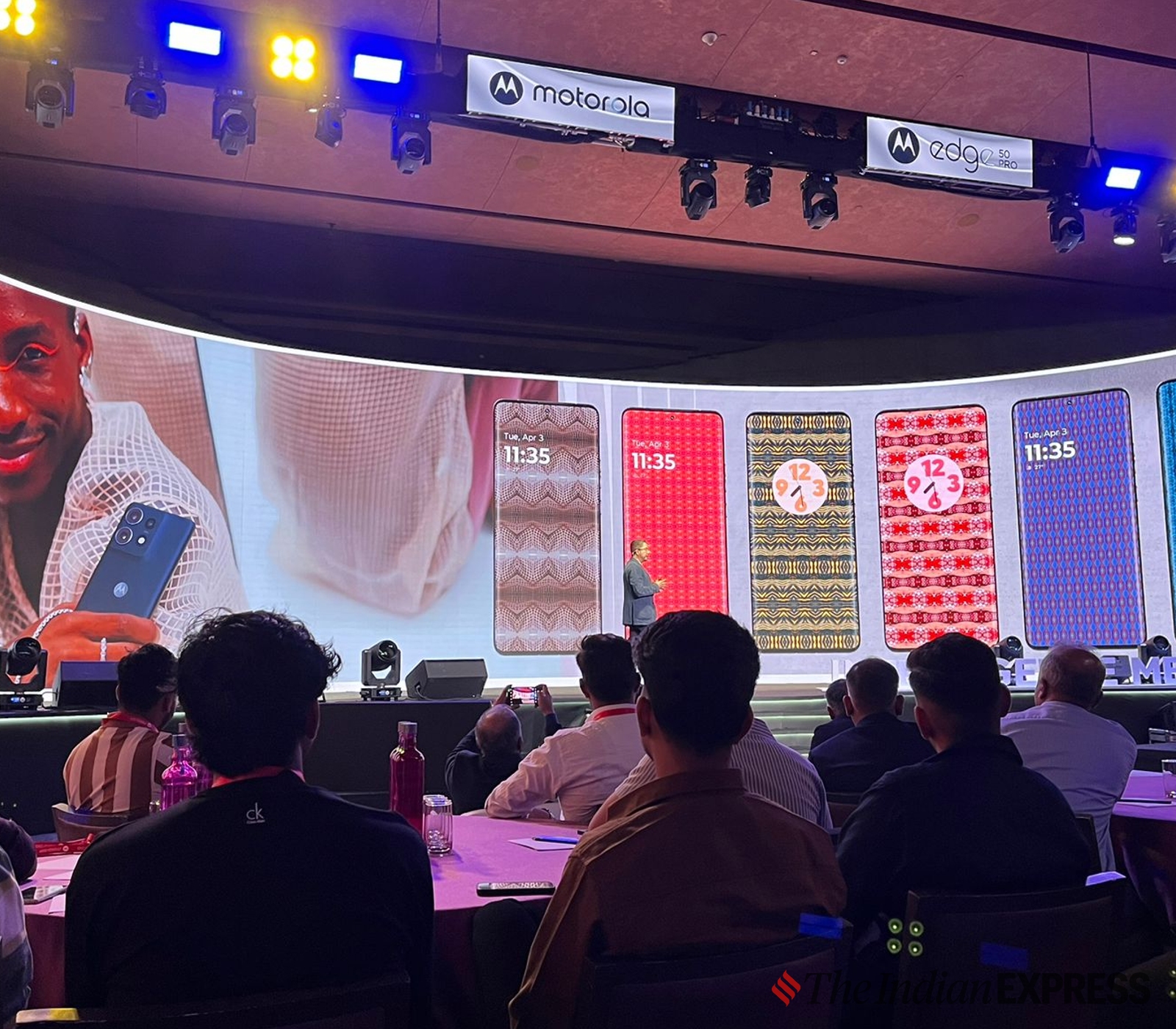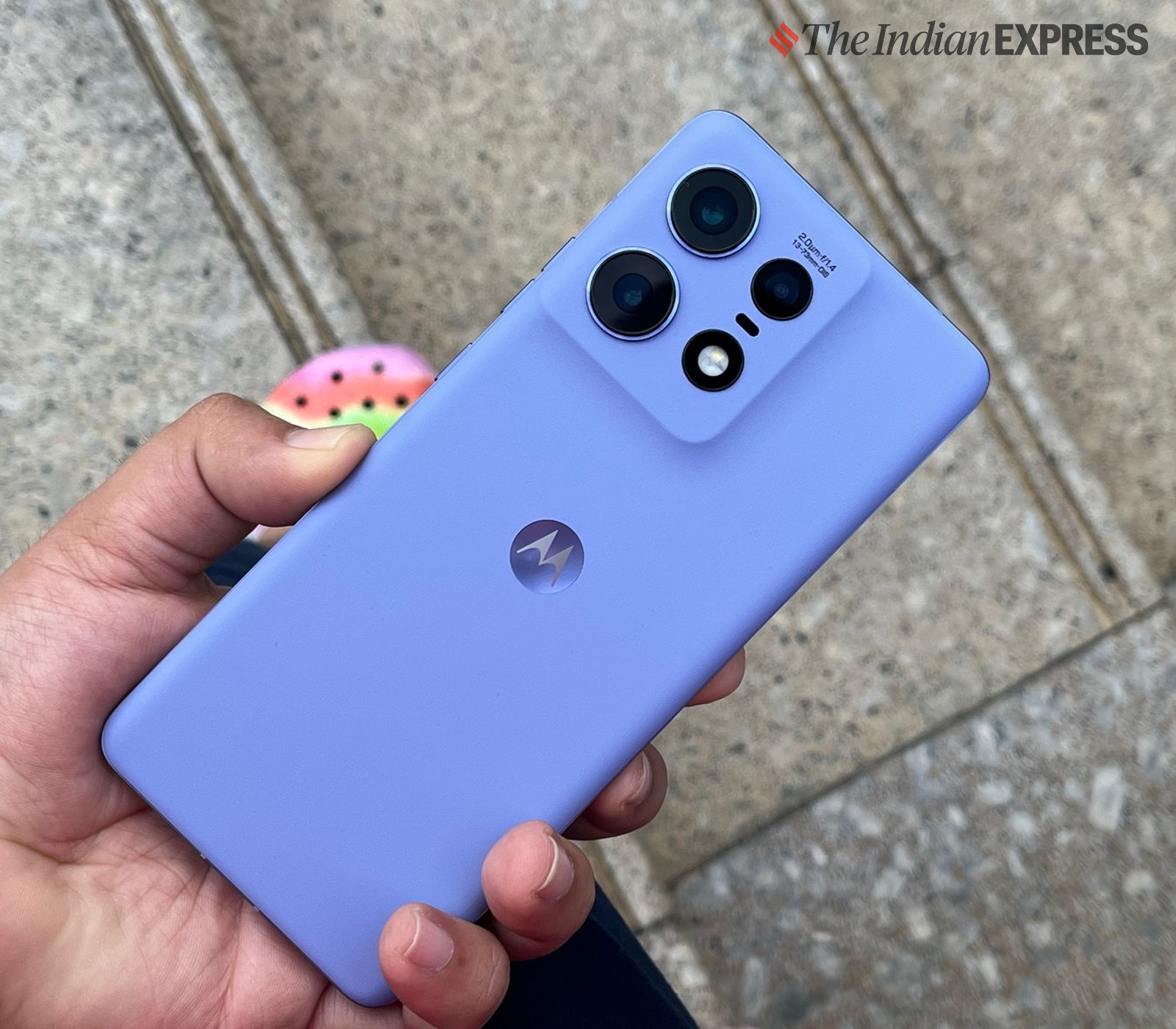- India
- International
‘AI will continue to become more pervasive across the entire user interface’: Motorola’s head of customer experience and design
AI could make smartphones highly personalised, all thanks to the changes coming to the user interface.
 The Motorola Edge 50 Pro features an AI-powered pro-grade camera setup alongside an AI photo enhancement engine, promising improved dynamic range, greater noise reduction, and AI adaptive stabilisation. (Image credit: Anuj Bhatia/Indian Express)
The Motorola Edge 50 Pro features an AI-powered pro-grade camera setup alongside an AI photo enhancement engine, promising improved dynamic range, greater noise reduction, and AI adaptive stabilisation. (Image credit: Anuj Bhatia/Indian Express)Smartphones have reached a point where they look and work a lot like previous generation models, putting the entire industry in doubt over the future of phones. However, Motorola believes artificial intelligence could have a huge influence on the user interface and overall experience of smartphones in the future. Perhaps AI could rescue the smartphone market and put it back on a path of hypergrowth.
 Ruben Castano, Global head for customer experience and design at Motorola Mobility. (Image credit: Anuj Bhatia/Indian Express)
Ruben Castano, Global head for customer experience and design at Motorola Mobility. (Image credit: Anuj Bhatia/Indian Express)
“AI will continue to be more pervasive across the entire user interface,” explains Ruben Castano, Head of Customer Experience & Design at Motorola Mobility. “You can imagine a future where we could consider AI taking advantage and putting it to good use for the consumer, in terms of being proactive and truly becoming an assistant.”
Castano says the biggest innovation in the smartphone space – at least, what will bring a profound impact on consumers’ daily lives – lies in the user interface on a phone. “AI will have a heavy influence on the future design of the user interface,” he told indianexpress.com on the sidelines of the launch of the Motorola Edge 50 Pro in India. “We believe it’s important that if you are using a Motorola device, and have a certain experience with AI, or with that intelligence, it shouldn’t be different as you move to another device; it’s part of your ecosystem.”
 The phone features a generative AI theming tool that creates wallpapers based on your outfit. (Image credit: Anuj Bhatia/Indian Express)
The phone features a generative AI theming tool that creates wallpapers based on your outfit. (Image credit: Anuj Bhatia/Indian Express)
“You shouldn’t interact with your phone in a different way than you interact with your PC or your tablet,” he continued.
OpenAI’s ChatGPT, an AI-infused chatbot that can answer any user query much like humans, might have triggered a change in priorities in the industry, hastening the development and adoption of generative AI. But for brands like Motorola, the race is to bring generative AI to phones at the foundation level – not in the cloud but with large language models running on mobile, enabling on-device AI. The real novelty is in the software and mobile-optimised large language models powering certain AI features, giving users a differentiated experience.

Castano said the Edge 50 Pro, Motorola’s AI-enhanced smartphone, utilises a scaled-down version of a large language model to develop an AI wallpaper generator, providing a unique home or lock screen experience. “We are using a local version of a Gen AI model that runs on a device to allow consumers to do exactly that… take a selfie of what they’re wearing that day and create different themes that they can use to personalize.” “It’s a proprietary model, and that’s why the experience is unique to us,” he said.
Motorola has also put a lot of focus into using AI to improve the cameras on the Edge 50 Pro, resulting in sharper images. But while the AI makes the Edge 50 Pro a far more interesting phone than the company’s previous devices, the concept of AI phones has been long in the making. However, this time the messaging really is all about the new chips that enable on-device AI and support new types of applications and features to make full use of their AI capabilities.
Motorola joins Samsung and Google in releasing new smartphones that can run generative AI features throughout the phone, as brands shift to premiumisation to increase the average selling price (ASP) of devices and remain hyper-bullish in key Asian markets, especially India.
Samsung’s Galaxy S24 series and Google’s Pixel 8 (review) lineup have capabilities to support features powered by Gen AI. OnePlus is also getting into mobile AI with the release of AI Eraser, a new AI photo editing tool that uses Oppo’s own LLM, AndesGPT. However, Apple is yet to announce Gen AI updates designed to bring AI to its next generation of iPhones and other products but the long wait may be coming to end with the company widely expected to announce its AI strategy at the Worldwide Developers Conference in June.
 India is the first global market where Motorola has launched the Edge 50 Pro. (Image credit: Anuj Bhatia/Indian Express)
India is the first global market where Motorola has launched the Edge 50 Pro. (Image credit: Anuj Bhatia/Indian Express)
“When you can ask your device to do something instead of going yourself to find a specific application, opening it, and going through different steps to get to the end result that you’re looking for, that’s a fundamental change in how we use or are used to interacting with a smartphone today. So it’s going to be prevalent across all parts of the smartphone,” Castano said when asked how generative artificial intelligence will make big changes to the user interface on phones of the future.
But as more phone brands launch devices with Gen AI capabilities, there may be a rush (and also pressure) to bring as many features powered by AI as possible. For Castano, however, the goal appears not to flood AI features for the sake of it. “We won’t just throw AI features into a smartphone and try to sell it based on that. It’s about what they are good for and what we are using them for. We will have our unique take on it as we always do at Motorola.”
There’s no doubt that Gen AI has become a legitimate selling point for phone makers. But Castano is of the opinion that more than the hype, Gen AI opens up a new wave of AI-first hardware and software, bringing new form factors to the market. “The Gen AI intelligence can really become contextual and make the user interface adapt to what you as a user need during a specific moment, opening the way to new form factors,” he said.
More Tech
Apr 04: Latest News
- 01
- 02
- 03
- 04
- 05































